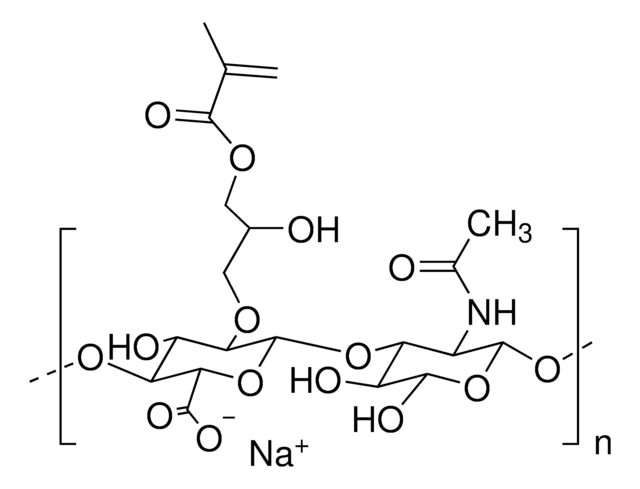917079
PhotoHA™-IRG, methacrylated hyaluronic acid bioink kit, with Irgacure
Sinônimo(s):
3D Bioprinting, Bioink, HAMA, Hyaluronic acid
About This Item
Produtos recomendados
descrição
Methacrylated hyaluronic acid:
Degree of methacrylation: ≥ 45-65%
Nível de qualidade
esterilidade
sterile; sterile-filtered
peso molecular
Mw 100-150 kDa
composição
Product components :
Methacrylated hyaluronic acid (100 mg)
Irgacure photoinitiator (100 mg)
temperatura de armazenamento
−20°C
Aplicação
Informações legais
Frases de perigo
Declarações de precaução
Classificações de perigo
Aquatic Chronic 2
Código de classe de armazenamento
11 - Combustible Solids
Escolha uma das versões mais recentes:
Certificados de análise (COA)
Não está vendo a versão correta?
Se precisar de uma versão específica, você pode procurar um certificado específico pelo número do lote ou da remessa.
Já possui este produto?
Encontre a documentação dos produtos que você adquiriu recentemente na biblioteca de documentos.
Nossa equipe de cientistas tem experiência em todas as áreas de pesquisa, incluindo Life Sciences, ciência de materiais, síntese química, cromatografia, química analítica e muitas outras.
Entre em contato com a assistência técnica









